RDs: Find Your Voice
For the past 17 years I’ve hosted a platform for speech. I watch a river of words pass by each day, so much that the Bible, all 66 books, gets rewritten (in wordcount) every few days.
What are the negative thoughts I most regularly hear when people talk about their sport? The Ironman lifestyle is unsustainable (in terms of cost and hours and energy spent training). Ironman is killing our local race scene. The roads are dangerous. Triathlon is becoming too formulaic. Equipment is too expensive.
But still there is a hunger to take part!
When I hear about Millennials and what it’s going to take to get them interested in triathlon, I’m not moved or concerned for two reasons. First, Millennials aren’t the first generation to have a hard time right out of college. My first racing bicycle was a Raleigh International I bought used. I then upgraded to a used Colnago frame I saved up for and bought for $250 and then I swapped the parts over (and there it is, below, in the ’81 Ironman!). During bike check in at the Hawaiian Ironman in 1981 “Cowman” walked his bike up and I recognized the frame as my old Raleigh International. He and I traced the custodianship of that bike between my ownership and his.
I try to make it as easy on folks as I can. I host a no-charge Classifieds Forum here on Slowtwitch. I understand that equipment is expensive, but only if you refuse to buy below a certain threshold. I can think of reams of ways for people who are financially challenged to get their equipment cheap or free, assuming these folks have a corresponding skill to offer in return. We all found ways to afford our equipment when I started racing. (Still, perhaps we need to explore in depth, on Slowtwitch, methods to obtain goods and services inexpensively.)
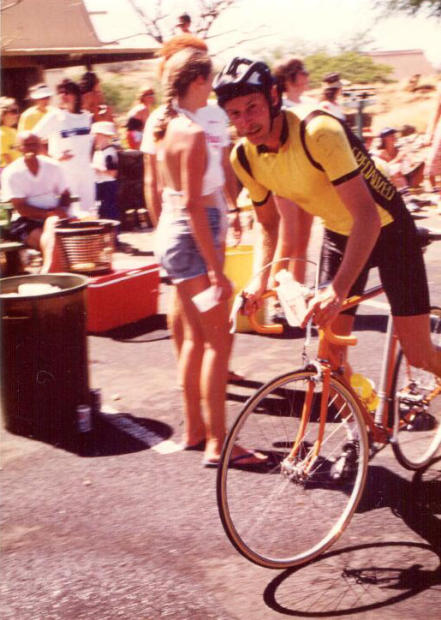
Then there is simply the fact that, yes, early adult life is time consuming. Triathlon is often a sport not engaged in until one has his or her feet on the ground. Kids are old enough to be self-regulating. Job and finances reach a point of stasis. You ran or swam in high school. You are happy with work, with family, but then your brain says: there must be something more. And multisport is the antidote for so many people.
Let me rephrase. Swim, bike, run, nordic ski, MTB, these are not the answers. They are the tools. I’m not concerned whether Millennials eventually pick up these tools to chisel out the answers. Why?
High school high-quality performances. Do you know which decade of the last century produced the most high schoolers running sub-4:10 miles? The 1970s. The next most? 1960s. Then the 1980s, then the 1990s. But then something happened. The trend went the other way. Since the turn of the century kids are running fast again. Why? Because there are more of them! My generation had babies!
It’s not just that there are more in school, there are more who are running. We know this because the times are fast. You won’t get fast times unless you have a pool of average runners out of which fast runners emerge. Furthermore, 2013 was the year when the combined number of girls in high school swimming and cross-country outnumbered the combined number of high school boys in taking part in those sports. So now we have many more potential multisporters than we did in “my” era.
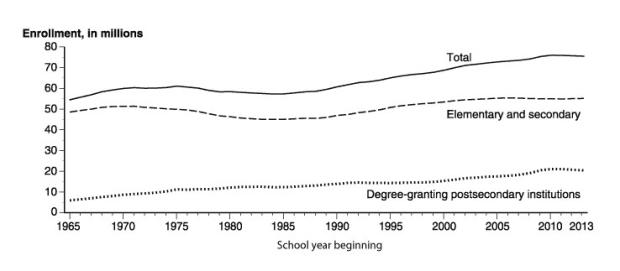
In sum: the fraction of Millenials interested in endurance sport is as large as that of my generation. We have a huge pool of emerging adults with the athletic skills required for an easy move into multisport.
It’s just demographics. When I was in high school, some of the distance running stars of my era had names like Dale Fleet and Matt Centrowitz. Today, some of our best distance runners are Mac Fleet and Matthew Centrowitz (first U.S. Gold Medal winner in the 1500 meters since 1908). My era’s high school distance gods had kids, who are this era’s distance gods. From 2000 to 2016 it’s been the kids of my Baby Boomer generation going to high school. The only difference: more of my generation’s kids are going to college. This delays their entry into the “real world,” and they emerge with debt to pay off.
But they are coming! For some years now I’ve been warning those (few) who would listen that we have a demographic problem ahead of us. That demographic problem reached us, it’s been with us for 4 years, and now people are finally listening because they’re feeling it. We are in the middle (well, nearing the end actually) of that demographic problem. It’s simply a numbers game. High-quality performances among U.S. high school runners was strong between 1965 and 1975, and that generation produced a ready crop of multisporters that fueled triathlon’s big growth years of 1983 to 1989. We did not see these high school performances again until the early 2000s, but those performances have been flowing, unabated, for the past 15 years. So…
…No, Xers and Millennials are not distracted from multisport by some shiny object. They are nearly ready. But we can’t stand in place either. Here are my prescriptions going forward, and I write these mostly for race directors and event service providers:
Don’t paint by the numbers
Do you know what most race production companies are? Copy bands. Tribute bands. There is a thread on our reader forum right now, asking folks to name the races they feel offer the best value. Look at some of the responses. Know what most of them have in common? They are originals.
Find your voice
Are you a course hunter? I am. I do this for entertainment. I boot up Google Earth and go course hunting. Even if I never put on the race, I plan the race. Why don’t you find a great place to produce a race, and then damn the distances! Damn the equipment requirements! Know what I want to produce? A gravel bike triathlon. I don’t care whether only 14 people show up. And because I don’t care, that’s the most likely race to turn into something big. Put on a race that resonates with you. Write your own song.
Don’t let your preconceptions guide you
Here’s something none of you are producing: draft legal triathlons. Why? More people competed in the draft-legal age-group race at Worlds in Cozumel this Fall than competed in the no-draft race, including Americans. Why are there almost zero races in the U.S. in the format at least 30 percent of our readers say they prefer? How many more relays could you put together if the only bike required was a standard road bike?
The rules are designed to make you fail
I’m going to be cryptic about this, and not put flesh on the bones of this. Yet. I’ll explain more in the months to come. Just, the typical pathway to success will lead to unsuccess these days, whether as a race promoter or a manufacturer or a retailer. Time to reassess. Trust no one over 40 (except me). Question everything. We’re at an inflection point. “Rule of Thumb” are dirty words.
Every time you produce a race that shares ironman’s distances you start at a disadvantage
Here’s another (harsher) way to describe an “independent” Ironman: a fake Ironman. Which will always put that race at a disadvantage. Do you know what you call a race that has a 2k swim, 53k bike, and an 11k run? I don’t know. But I know it’s not a copy! It’s not a fake!
We’re already a lifestyle sport
Here’s something I read a lot, and it was just written yesterday: "You can always get a few mates together and do your own races. No fees. I have started doing it.” I hear a lot of people saying they still ride, still run, still swim, but they don’t race anymore. You can look at this as a bad thing. I look at it as a great thing! Why? Because multisport was always seen as an avocation that can only be expressed and experienced through the prism of racing. We are, now, like skiing, tennis, surfing, golf. We have reached the holy grail: We are a healthy, vibrant ecosystem that does not require the race for validation. Here are two true things: there are millions of lapsed triathletes; and triathlon is the Hotel California of sport: no one ever leaves. Not really. So, it’s simply up to you (whoever you are) to decide whether you want to build something compelling and original, because you have a ready market.
It’s a product; it’s a service; so like any product or service, improve it
Why is it we think it’s okay that we’re immune from market pressures exerted on the rest of the world? I love that Charles Schwab commercial, where the married couple scrutinizes everything… except their investments. Brilliant! A reader commented on my series article from yesterday, that triathlon could borrow from "Amazon's one click shopping and Southwest’s Transfarency model. Amazon makes purchases easy by having less clicks.” Okay. Let’s start here. One-click registration? Easy race transfer? Insurance that does not cost newbies $15 per race? Navigating the pre-clicked box minefield every time somebody registers? I don’t want us to be like that couple, who questions nothing about this process. We need to ask ourselves, about every part of this process: What would Bezos do? And then either be the first to do it, or the last (you will eventually need to adopt the motif the market demands).
Now I’m not talking only to race and event services producers
"God created the heavens and the earth, the earth was null and void,” and null and void was the state of my sport when I returned from the Hawaiian Ironman in 1981. If I wanted a sport, I needed to make it. I returned from Kona in February of 1981 and I produced my first triathlon in August of 1981. And like Dave McGillivray who shoots the gun for the famous race he produces (The Boston Marathon) and then jumps in and runs it himself, I competed in my race in August of 1981. I produced the race so that I could have a race to compete in! There were no triathlons!
What did I know about producing triathlons? Bupkiss. Which is exactly what I knew about manufacturing wetsuits and bicycles. But I did all that stuff anyway because I was too dumb to know better; too ornery to fail; and too selfish to do without the product or service that I wanted. And, hey, by now you guys know me. I’m not the brightest bulb. So if I can do it…


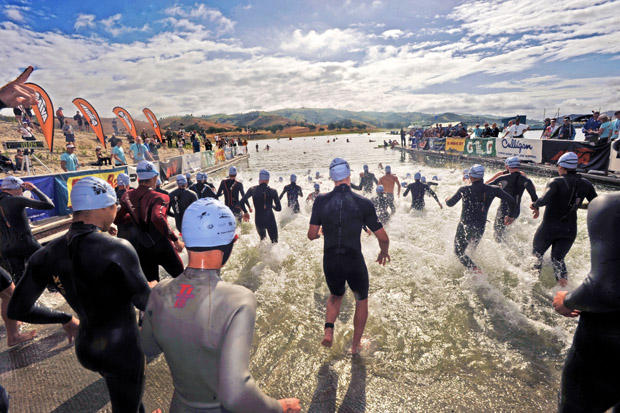
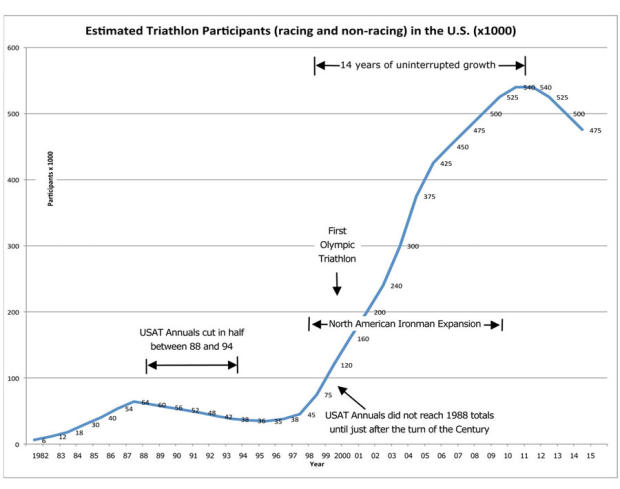
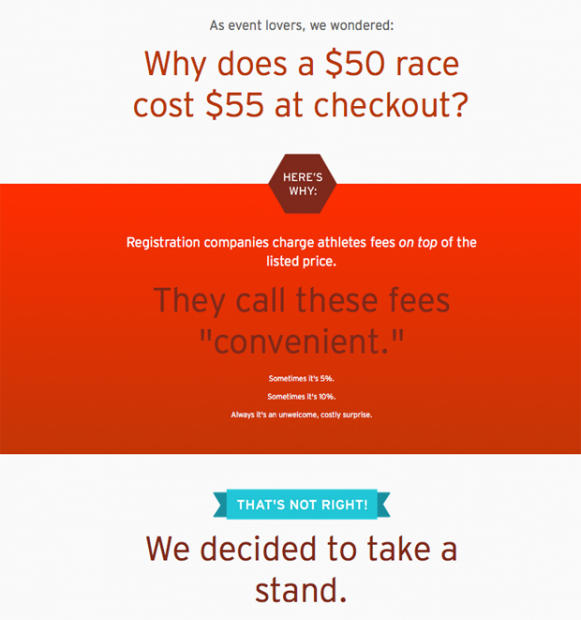
Start the discussion at slowtwitch.northend.network